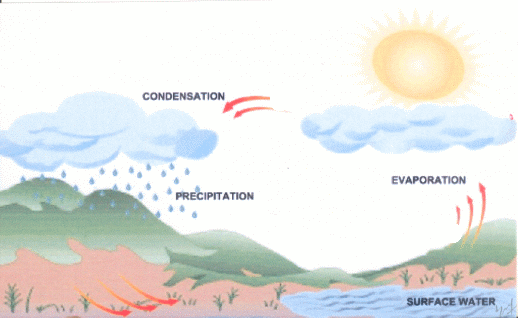Water molecules are so small that you can only see them when a number of them are clumped together to form a droplet. And they are constantly on the move. After a rain, they will eventually evaporate into water vapor. These airborne water molecules get carried back up into the sky to form clouds and then more rain.
The water on Earth plays a major role in the naturally occurring phenomena called the Hydrological Cycle, which can be described by four major steps: evaporation, condensation, precipitation and collection:
During the hydrologic cycle, water that evaporates from the ocean leaves its salt content behind because the salt in the water does not evaporate. So, the water cycle is, in essence, filtering saltwater, creating freshwater for the natural irrigation of plants, trees and crops.

To read more about this Topic - Subscribe to DESWARE-Online.